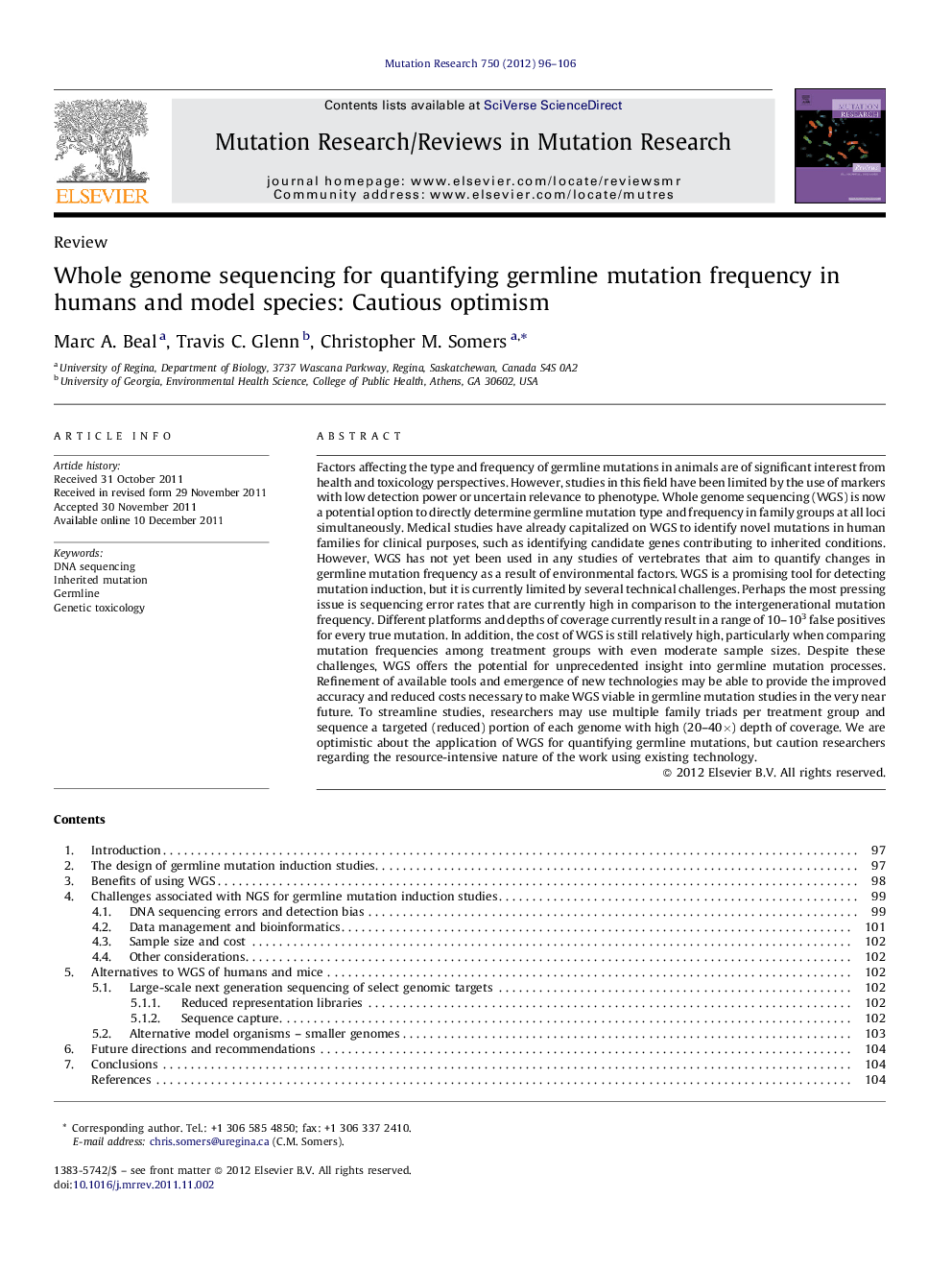| کد مقاله | کد نشریه | سال انتشار | مقاله انگلیسی | نسخه تمام متن |
|---|---|---|---|---|
| 2149773 | 1089884 | 2012 | 11 صفحه PDF | دانلود رایگان |

Factors affecting the type and frequency of germline mutations in animals are of significant interest from health and toxicology perspectives. However, studies in this field have been limited by the use of markers with low detection power or uncertain relevance to phenotype. Whole genome sequencing (WGS) is now a potential option to directly determine germline mutation type and frequency in family groups at all loci simultaneously. Medical studies have already capitalized on WGS to identify novel mutations in human families for clinical purposes, such as identifying candidate genes contributing to inherited conditions. However, WGS has not yet been used in any studies of vertebrates that aim to quantify changes in germline mutation frequency as a result of environmental factors. WGS is a promising tool for detecting mutation induction, but it is currently limited by several technical challenges. Perhaps the most pressing issue is sequencing error rates that are currently high in comparison to the intergenerational mutation frequency. Different platforms and depths of coverage currently result in a range of 10–103 false positives for every true mutation. In addition, the cost of WGS is still relatively high, particularly when comparing mutation frequencies among treatment groups with even moderate sample sizes. Despite these challenges, WGS offers the potential for unprecedented insight into germline mutation processes. Refinement of available tools and emergence of new technologies may be able to provide the improved accuracy and reduced costs necessary to make WGS viable in germline mutation studies in the very near future. To streamline studies, researchers may use multiple family triads per treatment group and sequence a targeted (reduced) portion of each genome with high (20–40×) depth of coverage. We are optimistic about the application of WGS for quantifying germline mutations, but caution researchers regarding the resource-intensive nature of the work using existing technology.
Journal: Mutation Research/Reviews in Mutation Research - Volume 750, Issue 2, April–June 2012, Pages 96–106